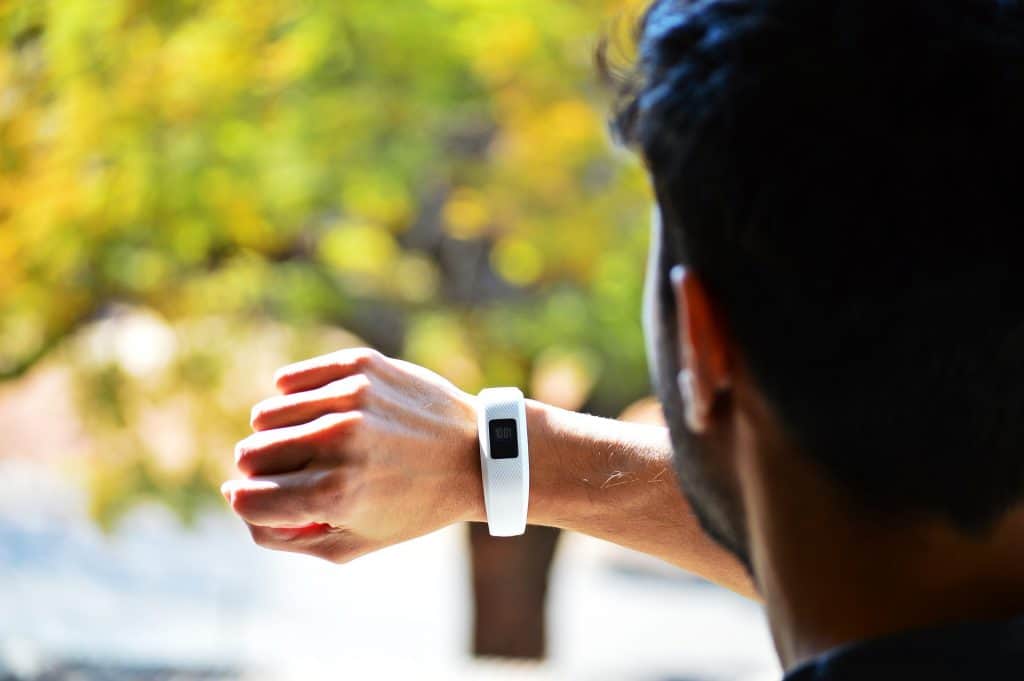Are you asking yourself, “how far did I run?” Well, tracking your data while you’re working out is one of the most critical aspects if you take your activity seriously, and running is no exception here.
By tracking your route and finding out how much you’ve run, you’ll be able to figure out the pace at which you’re improving in terms of mileage as well as average speed. If you don’t want to wonder “how far did I run” after every morning exercise, this article is made for you!
Ideally, there are several ways to figure out your mileage. These methods vary in terms of accuracy, advantages, and disadvantages. Read on, if you want to know more about these methods and how to pick the right one for you!
Top 5 Methods to Track Your Running Distance
In the following list, you’ll have an in-depth look at some of the most popular ways to track your distance while running, along with the method’s points of strength and weakness.
1. GPS Run Trackers
GPS run trackers are by far the most commonly used method for measuring distances among the running community. GPS stands for “Global Positioning System”, which is a system that uses a network of satellites for navigation and timing.
The best thing about these systems is that they allow you to measure the distance that you’ve covered in real time regardless of the route you’ve taken. This means that it’s an excellent method to know your running distance anywhere.
The best thing about a GPS watch is it can also tell you your current running pace, so you can use it while sprinting to measure your maximum speed and how long you’ve maintained it.
The most popular brands for GPS trackers out there are smartwatches like Garmin Forerunner 945, Coros Pace 2, and Apple Smartwatches. However, there are several other options out there.
The only drawback of these options would be their premium price tag. However, if you’re committed to running, then a quality GPS tracker should be worth the investment.
2. Smartphone Apps and Fitness Bands with Pedometers

One of the alternatives to opting for pricey smartwatches with advanced GPS technology is to use fitness bands with simple pedometers.
A pedometer is simply a step counting sensor that recognizes the number of steps and strides you take while running and records them.
This allows the bands to give you a near accurate estimation of the distance you’ve covered while walking or running.
The best thing about these bands is that they offer a wide range of secondary features that GPS trackers offer while coming at a remarkably lower price. These features include counting calories you’ve burned, heart rate monitoring, and more!
The drawback of using pedometers is that they can track minor movements throughout the day and register it as a distance that you’ve walked or run, so it isn’t as accurate as GPS watches that track your locomotion rather than stationary steps.
If your smartphone has a built-in pedometer. It can do a similar job to what a fitness band does. This can save you even more money while giving fairly decent estimates of the distance you walk or run.
However, like fitness bands, it’s still an estimate and not accurate enough to track a distance for a serious runner.
Many smartphone apps can help you measure the distance you run, and most of them are free and can be paired with fitness bands, such as Pacer, FitBit, MyFitnessPal, GoogleFit, ActivityTracker, and StepsApp.
3. Map Routing Websites
If you don’t want to spend a lot of money on tracking devices, you can simply map your routes through popular websites that are built solely for that purpose! Among the best examples for these websites are:
Most of these websites use Google Maps in order to plot the track you’re planning to run, so you can determine the distance you want to run before your start by plotting your waypoint.
The drawback here is that it can be time-consuming, although some websites solve that by allowing previous users to share routes with other users.
Additionally, even though it’s highly accurate like GPS trackers, these websites don’t take elevation profiles into consideration like advanced watches.

4. Mechanical Wheel
In addition to map routing websites, you can always use wheels to measure the route before you take it.
You can do that by using the mileage counter on a car or a bike, but that method is also time-consuming, especially for serious athletes.
5. Running on a Specific Track
Lastly, you may also run on a specific track or a running course. This way, you can determine the distance you’ve run by counting the laps you’ve made.
The drawback here is that training will be monotonous and you’ll need to do some math in order to figure out the right distance you want to cover.
Why It’s Essential to Know How Far You Run
There are plenty of reasons why knowing your mileage is essential while running. For starters, a lot of runners set specific goals for the distance they want to achieve for every run.
If you’re training to improve your time or to join a half marathon, you always need to progressively overload your body to encourage your muscles to build more mass and endurance to handle the race.
In other words, without knowing the distance that you run, you won’t be able to gauge your strength and progress, so you’re going to find it much harder to calculate distances, especially if you don’t follow a specific route every time you run.
Final Thoughts

This wraps it up for today’s guide that walks you through the best ways to measure your distance while running or walking.
As you can see, there are plenty of ways to know how far you ran and they all have their advantages and drawbacks.
Ideally, you might want to opt for technologically advanced methods like GPS trackers, fitness bands, and apps to get the job done with relative ease.
These tools will help you answer the question, “How far did I run?”
However, if you’re still confused and don’t know which one to pick, you should consider trying each one of them before you settle on the one that works best for you!
